A self-effacing but always well-suited man,Bob Edwards was one of the most important art facilitators in Australia in the 20th Century.
Early in his career,he saved the burgeoning Aboriginal art movement in Papunya from going under,then moved on to help bring three major museums into being,and finally,he made the connections that allowed Australia’s state art galleries to import blockbuster exhibitions from around the world.
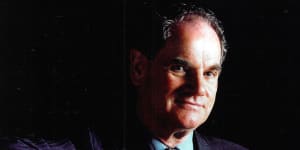
Bob Edwards during his time as director of the Melbourne Museum in the 1980s.Supplied
Indeed,one of the museum boards he chaired,the National Museum in Canberra,held a full day’s celebration of his career in 2011.
This was unimaginable in 1930,when Edwards was born into an orchardist family in Marion,South Australia,working the vines,stone fruit,almonds and vegetables. After school,he went to the Edwards&Chaffey winery to make vermouth. But his grandmother was a member of the Field Naturalists Society,encouraging both scientific method and research.
Bob published his first paper with the Royal Geographic Society aged 24 on the history of the local church at Marion. From there he turned his attention to Aboriginal campsites along the Sturt River,then to archaeological sites further afield.
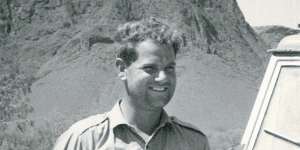
Bob Edwards on a field trip in Land Rover in central Australia.Supplied
This allowed him to move into studies of Aboriginal material culture at the South Australian Museum. In 1965 Edwards succeeded the illustrious Norman Tindale as curator of anthropology. That same year he spent six months in Arnhemland,producing a popular book on bark art.
By 1969,he was setting out on a ten-week journey through Central Australia from the Tanami and into the APY (Aṉangu Pitjantjatjara Yankunytjatjara) Lands;11,000 kilometres recording rock engraving and art sites that have barely been visited since. Some 32,000 photos he took are in the SA Museum collection.
Not only was he pushing back the dates for the Aboriginal occupation of Australia,he was discovering a living culture outside the museum,and establishing a keeping place in that museum accessible to its elders.
Insights that he briefly took to the Australian Institute of Aboriginal Studies before becoming the inaugural Director of the Aboriginal Arts Board of the Australia Council in 1975. Edwards was working with an all-Indigenous board,chaired by great artists,first Dick Roughsey and then Wandjuk Marika,often meeting on Country. Marika was once asked how he knew he could work with Bob:“Oh,we know,we look into the eyes. We can tell. He is the chosen one to do what we want him to do”.
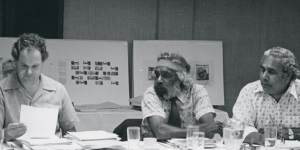
Bob Edwards at a meeting of the Aboriginal Arts Board,circa late 70s.Supplied
For this was the time when First Nations first discovered their voice,as Gough Whitlam had proclaimed in 1973:“The decision to place control for the arts in the hands of Aboriginals is intended to stimulate indigenous Australian arts and lead to the preservation of many art forms almost lost since the settlement of Australia by Europeans.”
But it took their non-Indigenous director to work out what to do with the piles of boards and canvases flowing out of Papunya. As no domestic gallery would accept them as art,the only answer seemed to be international exhibitions. By the early 1980s the board had initiated twenty exhibitions in 40 countries in Africa,Asia,Europe,North and South America and the Pacific Islands. In retrospect,Edwards claimed that the breadth and application of the program was perhaps “one of the most subtle and brilliant marketing exercises” in the history of Australian art.
For the works weren’t seen as ethnography. Paintings by Billy Stockman Tjapaltjarri in New Mexico were described by theNew York Times as “complex pointillist abstractions that would look right at home in New York’s Museum of Modern Art.” Edwards had chosen them for their aesthetic appeal. And it was estimated that more than 10 million people visited those exhibitions staged around the world.
Significantly,a 1972 board by Johnny Warangkula Tjupurrula sold recently for $1.146 million in New York. But history can also be cruel. At this year’s 50th anniversary celebrations for the Aboriginal Arts Board,the Australia Council’s list of Board Directors began only in 1984.
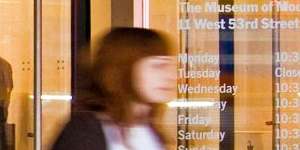
Critics thought some Aboriginal artwork championed by Edwards could be displayed at the Museum of Modern Art in New York.Alamy
By that time Edwards had moved on to become the Founding Director of Museum Victoria at which he announced the following transformation:“The dry and dusty institutions of the past to which reluctant school children were dutifully marched have given away to dynamic centres of learning and experience which offer fresh insight into the nature of human society,the delicate balance of ecology,the lives and habitats of insects,birds,mammals and fishes,the wonders of scientific and technological achievement,etc.”
Job done. Edwards then turned to Art Exhibitions Australia (formerly the International Cultural Corporation of Australia) where he overcame a natural reluctance to send precious artworks all the way to Australia. As Neil MacGregor recalled,“It was the fact that none of us knew the Australian institutions and Bob decided that the only way to bring the pictures was to bring the directors. So one by one we were transported and brought to Australia and beguiled and overwhelmed. The result of the loans and the exhibitions has been remarkable”.
The Entombed Warriors from Xian was an early triumph,thanks to Art Gallery of NSW director Edmund Capon’s Chinese connections. But Bob may have sealed the deal by enthusiastically tucking into a dish of fried scorpions at an official banquet. Subsequently Picasso (three times),Rembrandt,Gold of the Pharaohs,Taonga MaoriandThe Age of Sultan Süleyman the Magnificentwereloanedwith less culinary challenge – though a bottle of Grange is said to have tipped the balance on a Van Gogh self-portrait. There were 31 exhibitions altogether in the Bob Edwards years at AEA.
All funded from a one-off grant of $1m from the federal government,with instructions never to come back. It also gave AEA exclusive use of its federal indemnity scheme. On AEA’s 25th anniversary it returned $1m to the national and State galleries that had collaborated on shows. Not unrelated,Edwards had chaired the boards at both the National Museum and the new National Portrait Gallery.
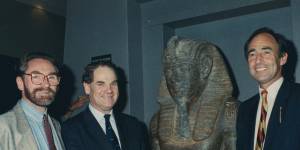
Bob Edwards at the launch of the Gold of the Pharaohs exhibition at the Melbourne Museum.Supplied
Bob Edwards’s support through a long and meticulous life was Cath,his wife who pre-deceased him in 2016. She often spent her weekends typing up reports and correspondence for Bob. They had four sons,Andrew,Martin,David and Greg.
The Opinion newsletter is a weekly wrap of views that will challenge,champion and inform your own.